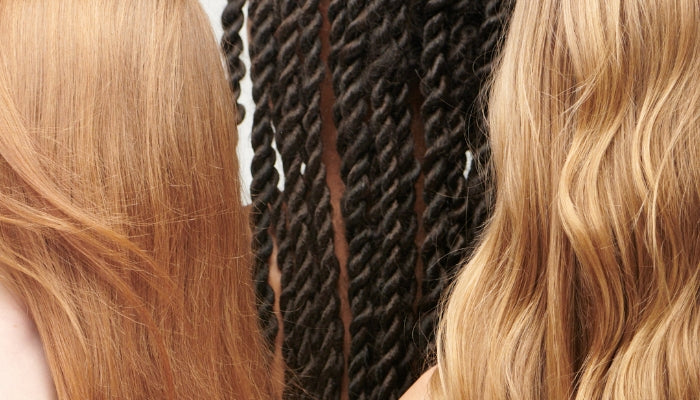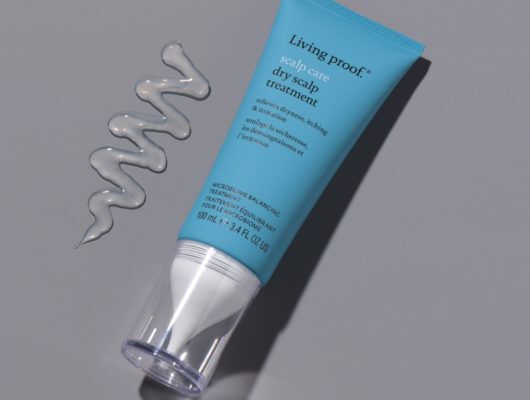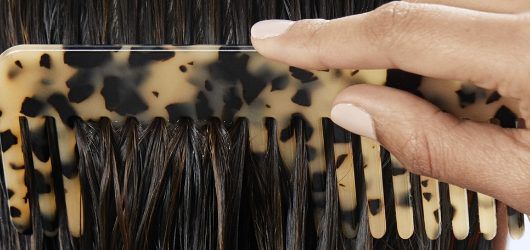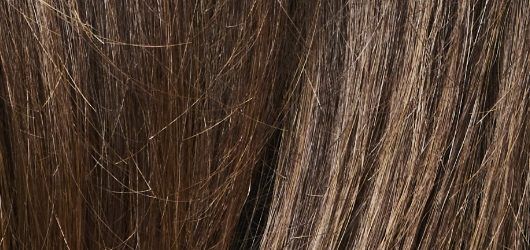6 Ways to Get Rid of Scalp Buildup: Causes, Signs & Treatment
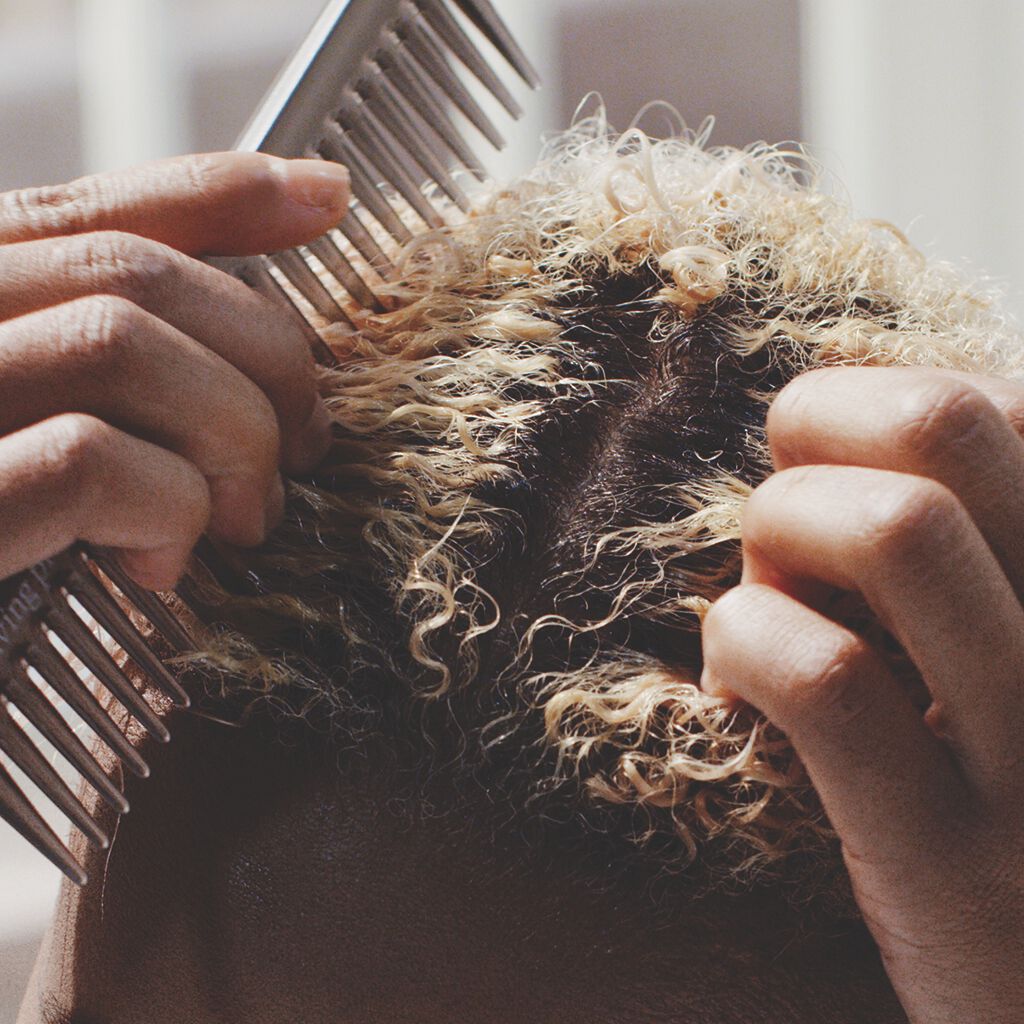
If you’ve ever experienced an itchy, irritated scalp or noticed that your once-voluminous hair has gone lifeless and limp, you might be dealing with scalp buildup. But don’t worry, Living Proof is here to help! Our commitment to science-backed haircare solutions means that we’ve got you covered with six effective, expert-approved ways to banish that buildup and get your hair looking and feeling its best.
Let’s explore the common causes of scalp buildup and — more importantly — how to address it. Plus, we’ll share some tips for preventing buildup in the first place, so you can keep your hair in top shape.
What is scalp buildup?
So what exactly is scalp buildup? It’s when residue from your haircare products, minerals from pollutants and hard water, or even your body’s own oil accumulate on your scalp. While almost everyone experiences this from time to time, persistent buildup can cause major hair challenges.
The three primary types of buildup that occur on the scalp are:
- Sebum buildup happens when the sebaceous glands in the scalp produce too much oil.
- Product residue occurs when hair products — such as shampoo, conditioner, or styling products — are not fully rinsed out of the hair when washed, leading to a buildup of product on the scalp.
- Dead skin cells cause buildup when the scalp sheds skin cells at an accelerated rate, resulting in flakiness and an itchy scalp.

If left untreated, scalp buildup can affect the health and appearance of your hair, as it leads to hair that feels greasy, weighed down, or flat. In severe cases, buildup can result in scalp irritation, inflammation, and infection. That’s why it’s important to pay attention to scalp buildup whenever it arises and take the necessary steps to treat and prevent it.
What causes scalp buildup?
The first step to preventing and managing buildup on the scalp is understanding why it occurs in the first place. Some of the most common causes of scalp buildup include the following.
Certain ingredients in hair products
Some hair products, such as shampoos, conditioners, styling gels, and hairsprays, contain numerous ingredients that can build up on the scalp over time. These products are designed to coat and hold onto the hair shaft, but sometimes they can also accumulate on the scalp. Several hair product ingredients are more likely to cause scalp buildup than others. Here are some of the most common culprits:
- Silicones – These ingredients are used to add shine and make hair feel soft, but — as viral videos shared by the Today Show illustrate — they can build up on the scalp and lead to a greasy, heavy feeling.
- Petroleum and mineral oil – Often found in hair gels and pomades, these ingredients create a thick, waxy buildup on the scalp and hair. They’re particularly difficult to remove, as they are not water-soluble.
- Waxes and heavy oils – Frequently used in styling products to provide hold and texture, these ingredients can also create a heavy buildup on the scalp and hair, leading to clogged hair follicles and hair breakage.
- Sulfates – While sulfates are commonly found in shampoos and are used to create a lather, they can be harsh on the scalp and hair, stripping away vital natural oils and leading to dryness and irritation. This, in turn, can cause the scalp to produce more oil, resulting in a buildup of oil AND product residue.
All Living Proof products are free of silicones, sulfates, and parabens. Learn more about how our products are formulated.
Environmental pollutants
Environmental pollutants and air pollution can deposit minerals and chemicals — such as volatile organic compounds (VOCs) and particulate matter — onto the scalp. Over time, this buildup can irritate the scalp, clog hair follicles, and impede hair growth, potentially leading to a range of hair and scalp challenges.
Hard water
Water that contains high levels of minerals can leave behind deposits on the scalp, resulting in a buildup of minerals over time. To test if your water is one of the reasons you’re experiencing buildup, use the hard water indicator included with Clarifying Detox Shampoo.

Excess oil production
If the scalp is not properly cleansed, oil can accumulate and mix with other matter like sweat and dead skin cells, leading to buildup.
Certain skin conditions
Conditions like psoriasis or seborrheic dermatitis can cause the scalp to become dry and flaky, which can contribute to the buildup of dead skin cells.
Inadequate washing
When the scalp is not washed properly, sweat, oil, and dead skin cells can form into a layer of buildup, which can clog follicles and cause scalp irritation.
Genetics
Some people may be more prone to scalp buildup due to their genes and may require more frequent scalp care to manage it effectively.
Signs of scalp buildup
Identifying scalp buildup can be tricky, and many people may not even realize they have it. Let’s explore the top six signs of scalp buildup to help you recognize when it’s time to clarify your scalp and hair.
Greasy, Oily Hair
Hair that just won’t seem to stay clean is one of the most obvious signs of scalp buildup.
Itchy or Irritated Scalp
Scalp buildup can create a layer of residue on the scalp, which can cause itching, redness, and irritation.
Flaky Scalp
When product residue and dead skin cells accumulate on the scalp, it can create a dry, flaky scalp.
Foul Odor
The buildup of product, oils, and dead skin cells can create a breeding ground for bacteria, giving rise to an unpleasant smell.
Dry, Brittle Hair
Clogged hair follicles can prevent hair from receiving the nutrients and moisture it needs and can cause hair to become weak, dry, and brittle, making it more prone to breakage.
Scalp Acne or Pimples
Clogged hair follicles can trap bacteria and fungi on the scalp, leading to irritation and inflammation and the formation of scalp acne or pimples.
How to get rid of scalp buildup: 6 expert-approved tips
Say goodbye to scalp buildup with these expert-approved methods.
1. Detox Your Hair
If your hair is feeling oily, cakey, or impossible to get clean, it’s time for a detox. Enlist the help of a clarifying shampoo such as our powerful, yet gentle, Clarifying Detox Shampoo. If you deal with hair product buildup on the regular, this scalp cleansing product will be your saving grace. Use it once weekly to rid your hair of buildup from the three most common sources: product, hard water, and pollution. That’s right, this shampoo treats all three sources and does so without stripping your hair of moisture unlike many of the other clarifying shampoos on the market. It will leave your hair feeling soft, shiny, and more manageable, as well as reveal a fresh, clean, and revitalized scalp.
2. Pick the Right Products
The wrong products can be a leading cause of dry scalp or other issues. Make sure to choose a formula without sulfates or parabens which can irritate sensitive scalps and make buildup worse. Shopping for hair products online? We recommend our Perfect hair Day™Shampoo, which is not only sulfate-free (free of SLS & SLES) but keeps hair feeling cleaner longer, so you have to wash and rinse less often. Browse all of our paraben-free shampoos to find out which collection is right for you!
In between washes, don’t be afraid to reach for dry shampoo — just make sure it’s the right kind. Some dry shampoos sit on top of the hair and increase buildup; however, our Perfect hair Day™Dry Shampoo actually cleans hair. It contains fast-absorbing powders to soak up oil and sweat and a powder removal active, which makes it easy to remove the powders, resulting in fresh, clean hair, free from oil and sweat buildup.
3. Use A Scalp Treatment
To keep the sebaceous glands on your scalp from producing excess oil, be sure to hydrate the skin with one of our hair conditioning treatments. Our Dry Scalp Treatment features a Hyaluronic-Based Molecular Patch that delivers instant hydration and lasting relief, which rebalances the scalp’s natural ecosystem.
4. Wash Your Hair Regularly and Thoroughly
Regular and thorough washing is key to preventing buildup, but it doesn’t necessarily mean washing your hair every day. Depending on your hair type and lifestyle, you may be able to go longer between washes. However, when you do wash your hair, be sure to do so thoroughly to avoid leaving any residue behind. Consider adding our Triple Bond Complex into your routine to protect against damage.
5. Brush to Mitigate Excess Sebum
Brushing your hair regularly can also help mitigate excess sebum buildup. Using a boar bristle brush can help disperse the oils along the length of your hair, but be careful not to damage your hair by brushing too aggressively. Consider adding our Healthy Hair Perfector to help protect your hair from damage.
6. Exfoliate Your Scalp
Exfoliating your scalp can also help remove buildup and promote healthier hair. Scalp massage is a simple and effective way to encourage circulation and loosen buildup. Rinsing your hair with apple cider vinegar can also help remove buildup and restore your scalp’s pH balance. If you prefer a more intensive exfoliation, you can try a scalp scrub or chemical exfoliant.

No matter which method you choose, be sure to follow the instructions carefully to avoid damaging your hair or scalp. With the right approach and the right products, you can get rid of scalp buildup and enjoy healthier, more manageable hair.
How to prevent scalp buildup
It can be a real nuisance, but fortunately, with the right prevention techniques, it’s possible to avoid scalp buildup altogether. Here are some tips to help prevent scalp buildup from occurring in the first place.
1. Wash Your Hair Regularly (but Not Too Frequently)
Regular washing removes excess oil, sweat, and dead skin cells from your scalp, but washing too often can strip your scalp of its natural oils, causing it to produce even more oil to compensate. The frequency of washing should be tailored to your hair type.
2. Use the Right Products for Your Hair Type
Different hair types have different needs, and using the wrong product can lead to an imbalance of oils, dryness, or irritation on the scalp.
3. Avoid Excessive Heat Styling
Heat styling tools like blow dryers, flat irons, and curling irons can damage your hair, leading to dryness and buildup. We advise using heat protectants, such as our Perfect hair Day™Heat Styling Spray when using these tools.
4. Protect Your Hair from Environmental Factors
Pollutants can contribute to scalp buildup, so protect your hair and scalp by wearing a hat or scarf on days when pollution is higher. Further shield your hair from the damaging effects of pollution with our Advanced Care Dry Shampoo, which not only removes dirt and oil but also creates an invisible barrier that repels pollutants, ensuring your hair stays healthy, refreshed and protected.
At Living Proof, we offer many products that can help prevent buildup and promote a healthy scalp. Our Clarifying Detox Shampoo is specially formulated to remove buildup, oil, and impurities, making it a great choice for a weekly deep cleanse. Follow this up with our Dry Scalp Treatment to promote a healthy scalp microbiome and protect against dry scalp flaking.

FAQs
Why is a healthy scalp important?
A healthy scalp is crucial to maintaining healthy hair. When your scalp is compromised, it can lead to inflammation and irritation, which can damage new hair before it even has the chance to grow. Taking care of your scalp is just as important as caring for the rest of your hair.
Are certain hair types more prone to scalp buildup than others?
Yes, some hair types are more prone to scalp buildup than others. For example, if you have fine hair, your hair and scalp may be more likely to experience buildup because of the products you use to add volume. On the other hand, if you have curly or coily hair, your scalp may produce more natural oils, leading to buildup.
How often should I wash my hair to prevent scalp buildup?
The frequency of washing your hair depends on your hair type, product use habits, and personal concerns. While washing your hair too often can strip your scalp of its natural oils, not washing it enough can lead to buildup. Therefore, it’s essential to find the right balance for you. As a general rule of thumb, aim to thoroughly wash your hair once or twice a week.
Can scalp buildup be treated at home, or do I need to see a professional?
In most cases, scalp buildup can be treated at home using the right products and techniques. However, if you’re experiencing severe symptoms like crusty sores, hair loss, or scarring, you may want to consult a professional. A dermatologist or haircare specialist can diagnose the underlying cause of your symptoms and recommend an appropriate treatment plan.
Get your scalp in shape: say goodbye to buildup with Living Proof
Scalp buildup can be a frustrating and uncomfortable issue, but it’s also a common one that can be treated and prevented. A healthy scalp is key to healthy hair growth, so it’s essential to make scalp care a regular part of your hair routine. Whether you’re dealing with oily hair or dry scalp, Living Proof offers a range of products that can help you achieve optimal scalp health and prevent buildup. So why not take the first step and explore our range of products today? From Clarifying Detox Shampoo to Dry Scalp Treatment, you’re sure to find something that meets your hair’s unique needs.
- Tags: Hair Health
